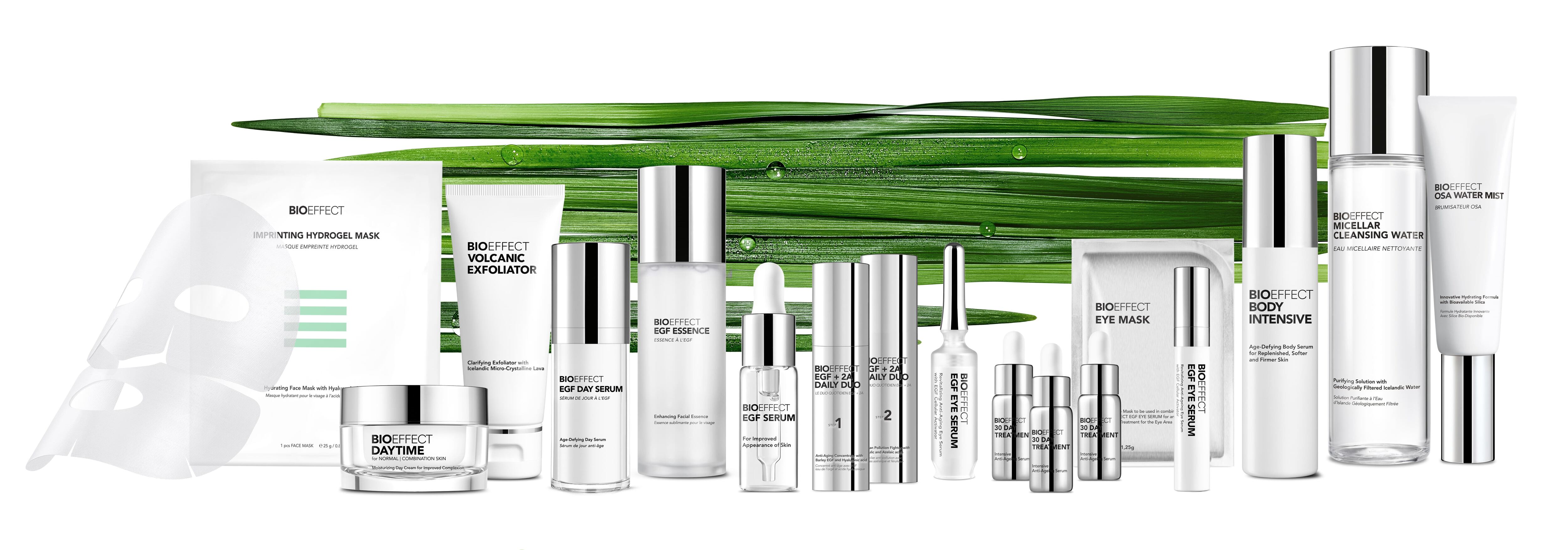From genetics to cosmetics
Founded by a group of scientists in 2009, Bioeffect started as a scientific project that attempted to replicate human proteins in plants. Following successful developments, the project morphed into an independent cosmetics company manufacturing barley-based epidermal growth factors (EGF) and subsequent skin care products.
EGF proteins, known for their important role in controlling collagen production, skin thickness and influencing skin elasticity and water balance, form the basis for Bioeffect’s specialised anti-ageing cosmetic formulations, including serums, creams and exfoliants, all of which are now available worldwide and in big beauty chains like Sephora.
Since 2009, Bioeffect has registered steady revenue increases of around 25% each year and company co-founder and chief scientific officer Dr. Bjorn Orvar said the hope was to continue this organic growth.
“We don’t have a marketing budget like many other brands have. Our goal was always to develop a product that could actually do something for your skin, and we could then more or less rely on word of mouth. And we will continue to do that,” Orvar told CosmeticsDesign-Europe.
“…We’re not going to be a brand with lots of SKUs. We’re going to have a limited number of products but just focus on doing well with those products we have.”
In the coming years, he said the company would especially target its “fastest-growing” and increasingly important market – Asia. “We started, obviously, in Western Europe – UK, France, Germany, Austria, Denmark – and these markets have been our support, they have always been there for us. But now we’re focusing more on Asia; Asia has been very interesting for us.”

Moisture boost and tech innovation
Bioeffect’s growth factor proteins are extracted from the seeds of bioengineered barley plants, grown in Iceland at the company’s dedicated greenhouse. The company uses three growth factors in its skin care products – Epidermal growth factor, Keratinocyte growth factor, GF and Interleukin 1 alpha (IL-1a) – but has the capacity to manufacture around 25, seven or eight of which hold potential for skin care.
The company recently launched two hydration products – a gel face mask and moisturising essence – for complementary use alongside its EGF serum, following scientific findings that indicated moisture played an important role in the efficacy of the serum.
“We noticed through our products that the growth factor works much better the moister the skin is. These growth factors tend to work well in a water environment – inside and outside our cells,” Orvar said. Bioeffect launched these products that improved the “transient water level in the skin”, he said - the hydrogel face mask to use following the EGF serum to create a moist environment for it to work and the moisturising essence to prepare the skin ahead of serum application.
Orvar said Bioeffect was now primed to launch two more products next year, based on new technologies and ways of integrating the growth factors into cosmetic formulations.
“We will be celebrating our 10th anniversary next year, in April-May, so we’ll launch our 10th anniversary product and that will be something really, we hope, well received.”
Anti-ageing – a personalised process?
Asked if Bioeffect was looking into personalised beauty potential for its products, Orvar said: “EGF is universal; it’s on all our skin. But we also know that already in our 20s, the levels start to drop and so you would expect to see different demands, so to speak, for EGF in different persons, depending on age and how they live, how much environmental stress they are experiencing, and also, to some extent, ethnic background.”
The company, he said, was therefore keeping a close eye on advances in genotyping and DNA which could ultimately open up opportunities for customisation in the future. Although that would rely on two key things, he said - the information being available and then knowing what to do with it.




